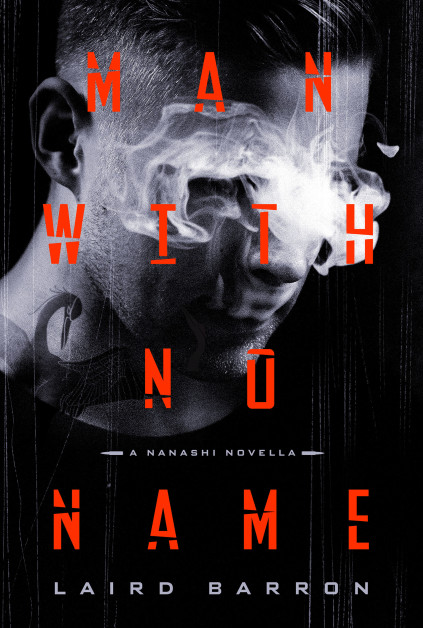
If you’re familiar with Laird Barron’s fiction, you probably have a good idea of the corner of horror that he’s made his own. It’s on the cosmic side of things, where visions and revenants expand minds and drive those who witness them away from sanity; but it’s also laced with nuanced characters and a lived-in approach that seems borrowed from the best that crime fiction has to offer. (An article by Adrian Van Young from 2013 on Barron’s work provides a great overview if you’re less familiar with his work.) Recently, Barron has been experimenting with new iterations of his style: last year’s X’s For Eyes followed the adventures of two brothers as they crossed the globe dealing with bizarre conspiracies and secret societies. (I recommended it to a friend as “like the Hardy Boys by way of cosmic horror. Alternately: Team Venture vs. Cthulhu.”) It was still recognizably Barron’s work, but a different facet of it. His latest novella, Man With No Name, continues in that tradition. Here, Barron’s protagonist is Nanashi, a killer caught between feuding crime families in Japan–in a manner of speaking.
The plot has echoes of many a crime story: Nanashi and his colleagues take a onetime wrestler, Muzaki, into their custody, awaiting further orders. It’s one part of a long-running conflict between them and their rivals, and in the moments of tense downtime, the reader learns more about Nanashi: he’s less boorish than most of his colleagues, and has been sober for several years. Muzaki is a more mysterious figure, and an ominous physical presence. “His scars seemed to become more livid and to stretch in discomfiting ways,” Barron writes in one description of him. And while the likely outcomes that await Muzaki aren’t particularly enticing, he seems to regard them with a kind of detachment. Mysteries about here, though they seem to be in a more grounded territory than his previous work.
Well, kind of. Partway through the novella, Muzaki shows Nanashi something that dramatically alters his worldview, both figuratively and literally. And what had been a fairly traditional crime story suddenly has its parameters expanded into something that borders on the mythological. The book’s cover bears the subtitle “A Nanashi Novella,” which suggests that more will follow–though what tone those will take, after the events and shifting worldview of this one, is anyone’s guess.
Barron announces the territory he’s entered with his title, which nods to the Sergio Leone’s early Westerns with a young Clint Eastwood. In the opening pages, there’s a reference to a crime boss who had “established himself as a poor man’s Albert Broccoli.” And the fact that the plot hinges upon a retired wrestler brings that genre’s stylized notions of heroes, villains, and violence into the mix. Though Barron’s invocations of other works ventures into less predictable territory: late in the story, two characters discuss the merits of Audrey Niffenegger’s The Time Traveler’s Wife. While this is Barron in a deeply pulp-influenced mode, that isn’t all that’s going on. And it’s another example of his ability to bring together taut storytelling and unsettling imagery in new combinations.
***
Man With No Name
by Laird Barron
JournalStone; 103 p.
Follow Vol. 1 Brooklyn on Twitter, Facebook, Google +, our Tumblr, and sign up for our mailing list.
